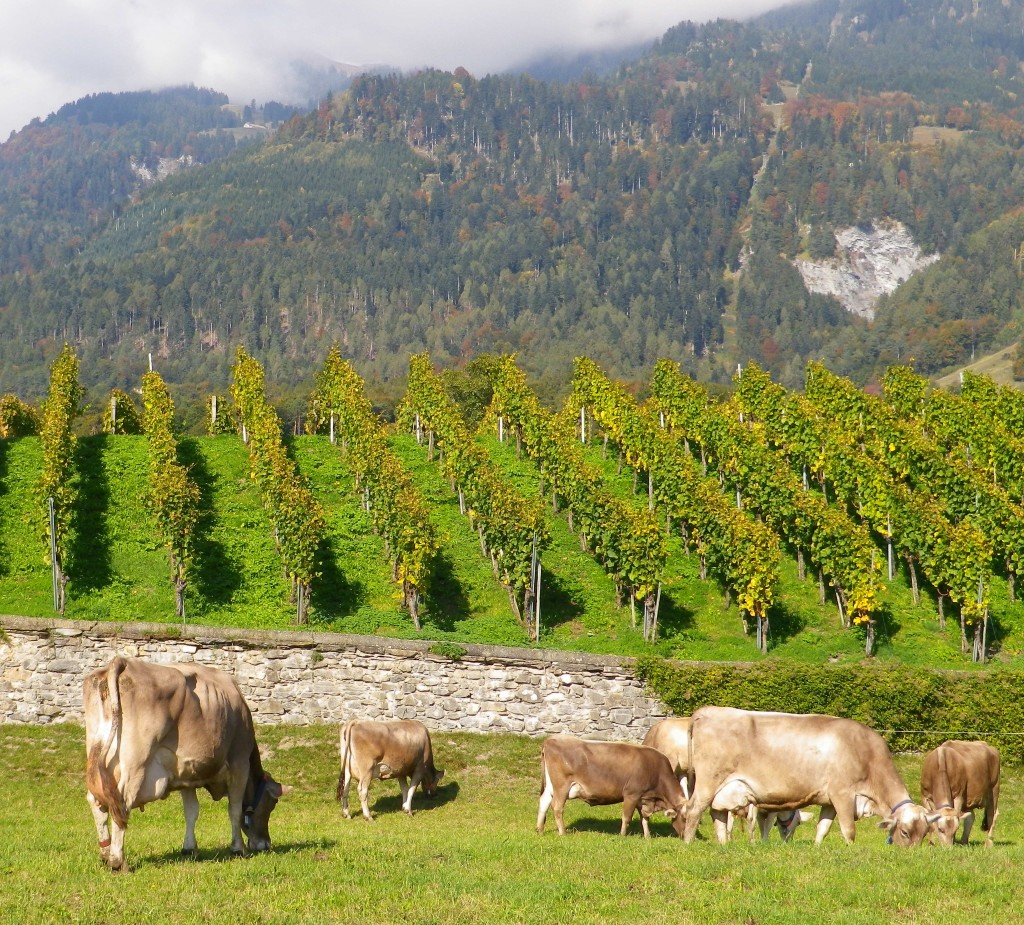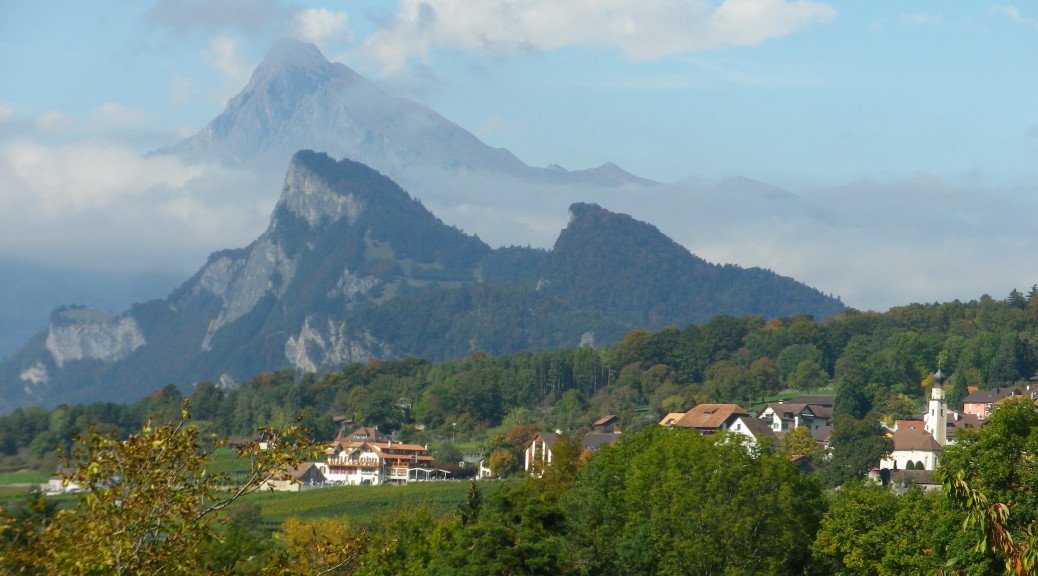Wine and Cheese, an iconic pairing. Swiss wine and cheese – not so often thought of. But that was exactly what came to mind on this hike.
Most people picture Swiss scenery as idyllic: alpine peaks, pristine villages, high meadows and green pastures. This hike offered it all, on a family-friendly trail that never ceased to amaze.
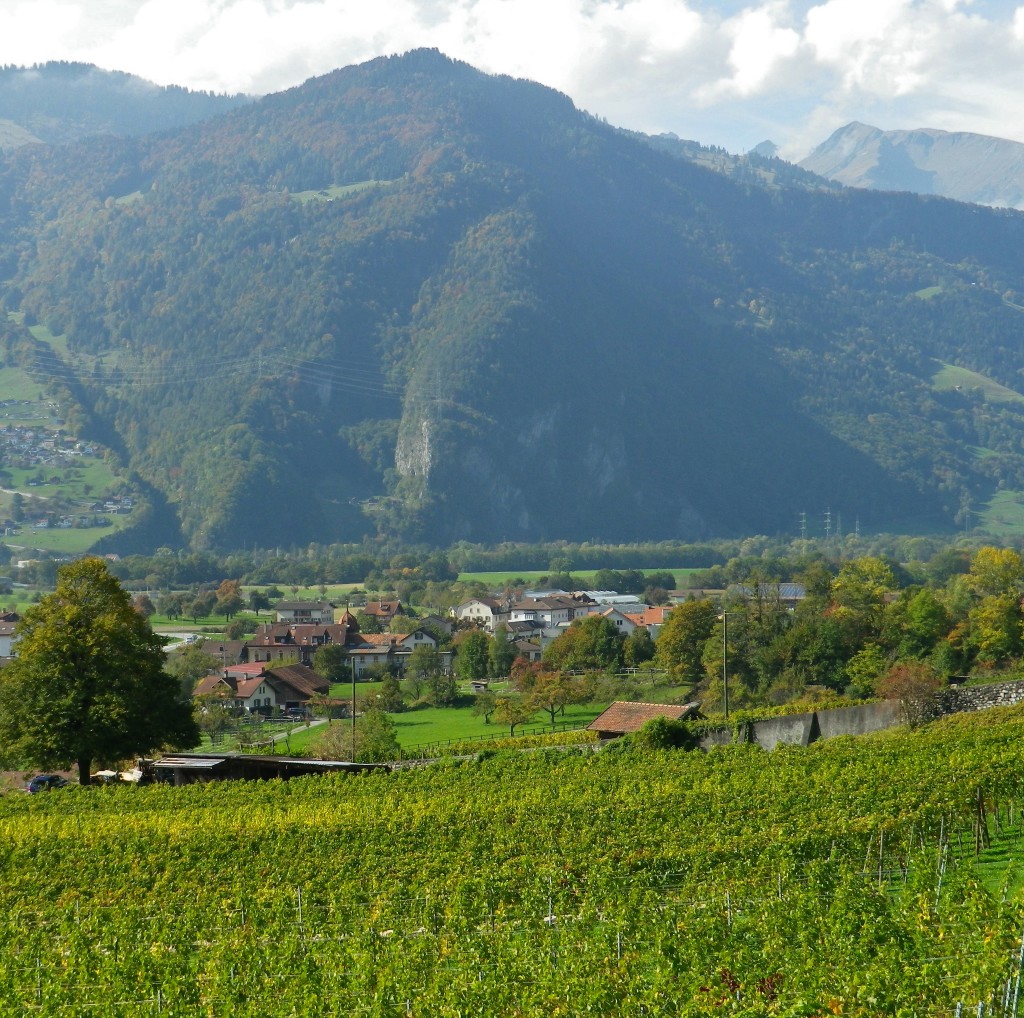
Beginning this hike at the train station in Malans, the trail meandered along the little Muelbach creek, a bright blue-green from the limestone rock. It soon entered vineyards. The harvest season was just about at end. The smell of grapes, crushed underfoot, or by tractors, was everywhere. If that didn’t get me thinking about wine, the next segment of the trail did. Climbing away from the creek, trail proceeded gently upward along a long, tarmacked path flanked by terraced vineyards. Interspersed along this section was a collection of signboards which served as a wine education trail for the village.
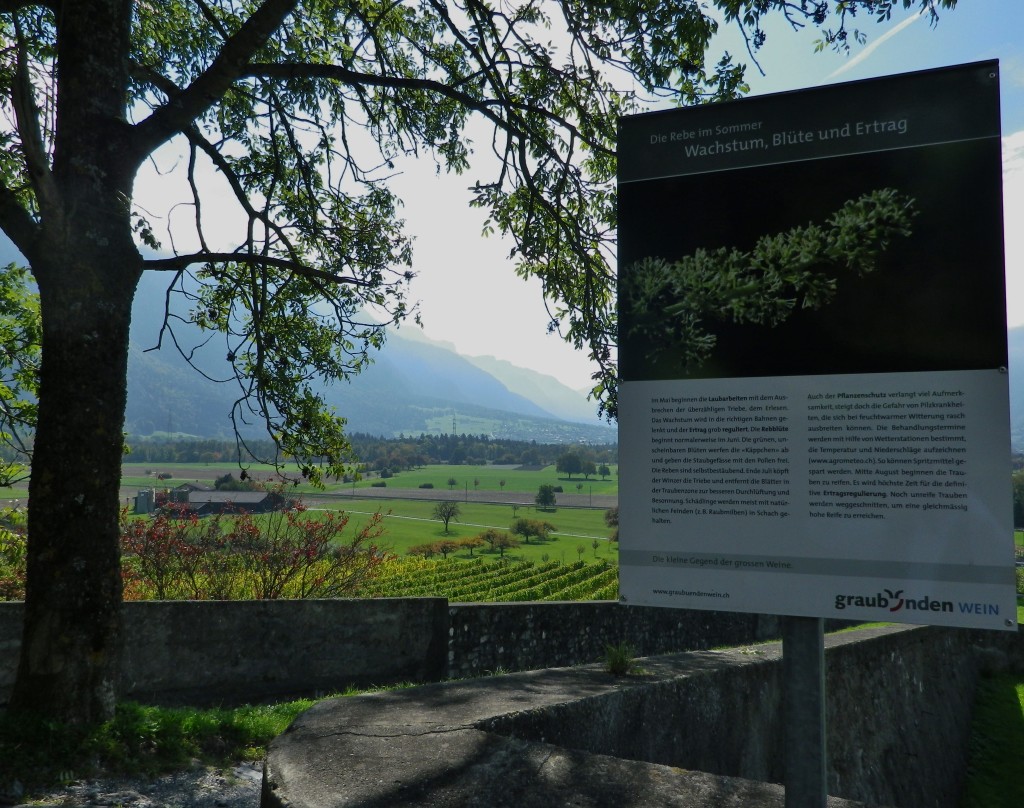
Another winery made its appearance once in the upper village of Malans. It was one of many traditional old buildings that lined the narrow roads. Many buildings are still made of wood, sideboards or shingles, but that is slowly changing. Many others are stuccoed. Most of them have colorful shutters, and some have window boxes filled with fall flowers.
At the edge of the village, is the entrance for the Aelplibahn, a cable car serving the top of one of the high peaks. Had I only known, I would have brought a picnic lunch (with a bottle of wine), gotten on the cable car, and enjoyed a lunch the views from over 1200 meters (feet) higher – at no extra effort to myself! Regretfully, I bypassed the entrance to the station, and followed the trail into the tree line.
The trail continued its almost imperceptible climb, and finally cleared the tree line. The mountains in all their glory became more visible; first the tops, then the bases. To the west, stark, rocky peaks devolved into forests of dark fir trees. Slightly lower down, green patches of high meadows dotted the mountainsides, an occasional hut the only sign of civilization at these higher elevations. Transhumance, the practice of bringing grazing animals to fodder (rather than the other way around), is still practiced here. Farmers move the animals to pastures at different altitudes on the mountains, taking advantage of different vegetation and different timeframes for availability. For centuries, livestock grazed on the high alpine slopes in summer, and moved lower throughout the season, ultimately re-entering the village to spend the winter in or near barns. (The move back to the village in the valley was often cause for celebration, a custom that still prevails in a few villages in the Alpine region.) I began to think of the famous Swiss cheese.
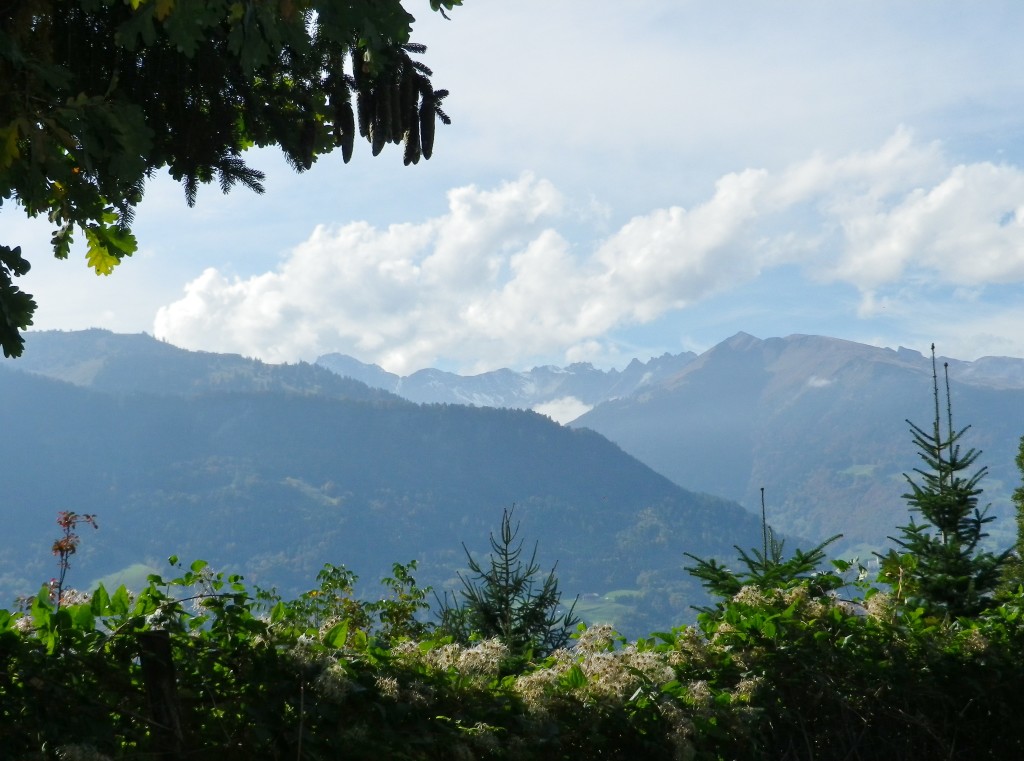
Jenins was even more of a wine village. The trail passed several small wineries, and the village has at least four establishments with good selections of local (Graubuenden) wine. Maybe because it was a sunny, Friday afternoon, maybe because it was the end of the harvest, or maybe just because it was a village in the heart of wine country, the village center was alive with people enjoying a stroll, or a glass of wine in the sun, or cycling families stopping to admire the views.
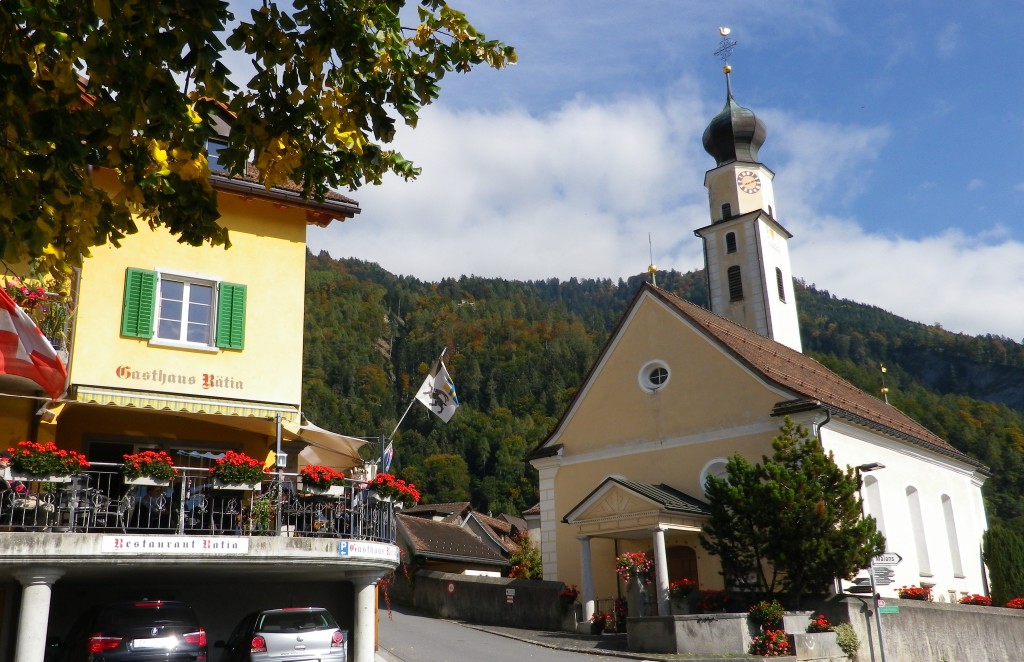
The return leg of this circuit route passed downhill through vineyards, and along small orchards, on a quiet, but family-filled trail. Just a quarter of a mile from the start point, the other penny dropped, as I passed by the local cheese producer, advertising his wares. There, in front of his house/barn/cheese shop, were his grazing dairy cows, surrounded on three sides by vines! Wine and Cheese! One of my favorite meals! If the combination didn’t originate here, at least in this area, it can claim excellent local sourcing!
The hike ended, it was time for some wine and cheese, as I reflected on this delightful trail, and the opportunity to experience some of the best of Switzerland.
